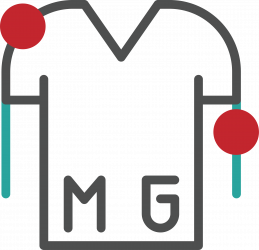A clavicle fracture, also known as a broken collarbone, is a common injury that can occur as a result of trauma to the shoulder area. It is most commonly caused by a direct blow to the shoulder or a fall onto an outstretched arm.
Causes of Clavicle Fracture:
Clavicle fractures are most commonly caused by trauma to the shoulder area, such as:
- Falling onto an outstretched arm
- A direct blow to the shoulder
- A sports-related injury
- Motor vehicle accidents
Symptoms of Clavicle Fracture:
The symptoms of a clavicle fracture can include:
- Pain in the shoulder area
- Swelling and tenderness around the fracture site
- Difficulty moving the arm or shoulder
- A grinding or cracking sensation when moving the arm or shoulder
- A visible bump or deformity at the fracture site
Diagnosis of Clavicle Fracture:
I can diagnose a clavicle fracture through a physical exam and imaging tests such as X-rays or CT scans. During a physical exam, I will check for tenderness, range of motion, and any visible swelling or deformity in the shoulder area. Imaging tests can confirm the diagnosis and determine the extent of the fracture.
Treatment of Clavicle Fracture:
Treatment for a clavicle fracture depends on the severity of the injury. Mild cases may be treated with rest, ice, and pain medication. More severe cases may require a combination of treatments, such as:
- Immobilisation: wearing a sling or brace to immobilise the shoulder and allow the fracture to heal
- Physical therapy: exercises to help maintain range of motion and strength in the shoulder area
- Surgery: if the fracture is severe or the bones are displaced, surgery may be necessary to realign the bones and stabilise the fracture.
Recovery from Clavicle Fracture:
Recovery from a clavicle fracture depends on the severity of the injury and the type of treatment received. Mild cases may resolve with rest and immobilisation, while more severe cases may require surgery and rehabilitation. Most patients are able to manage their symptoms and return to their normal activities with appropriate treatment.
In conclusion, a clavicle fracture is a common injury that can cause pain and discomfort in the shoulder area. If you suspect you have a clavicle fracture, it is important to seek medical attention promptly to receive an accurate diagnosis and appropriate treatment. With proper treatment and rehabilitation, most people are able to manage their symptoms and maintain their shoulder function.
